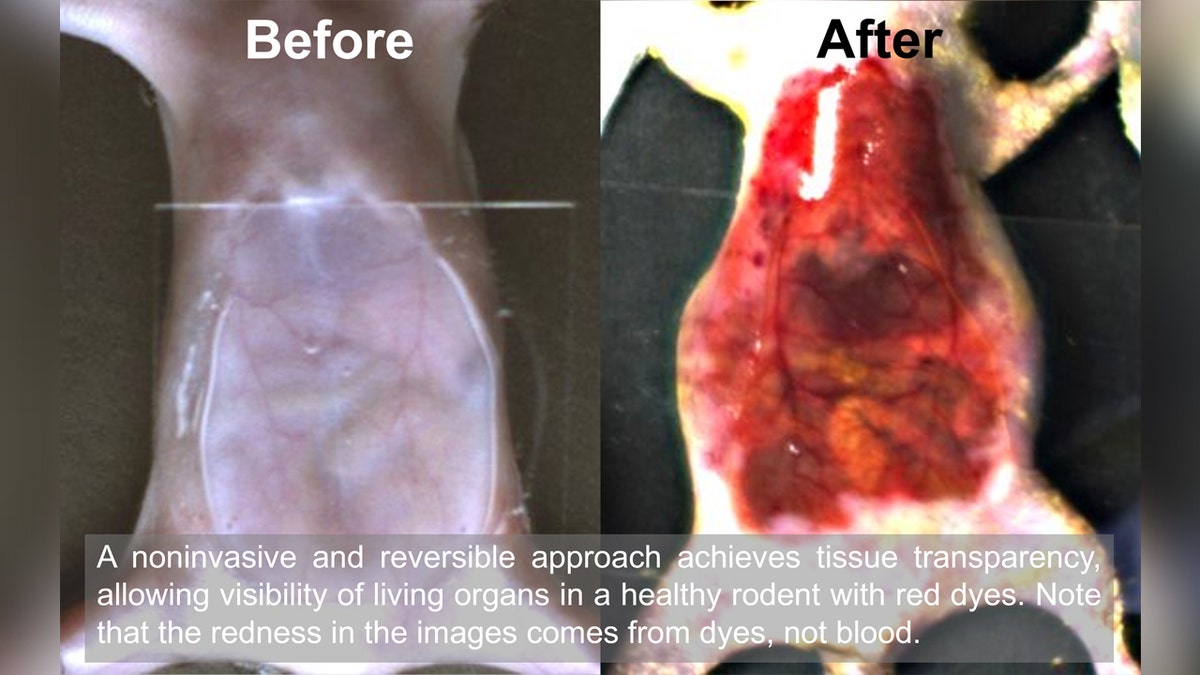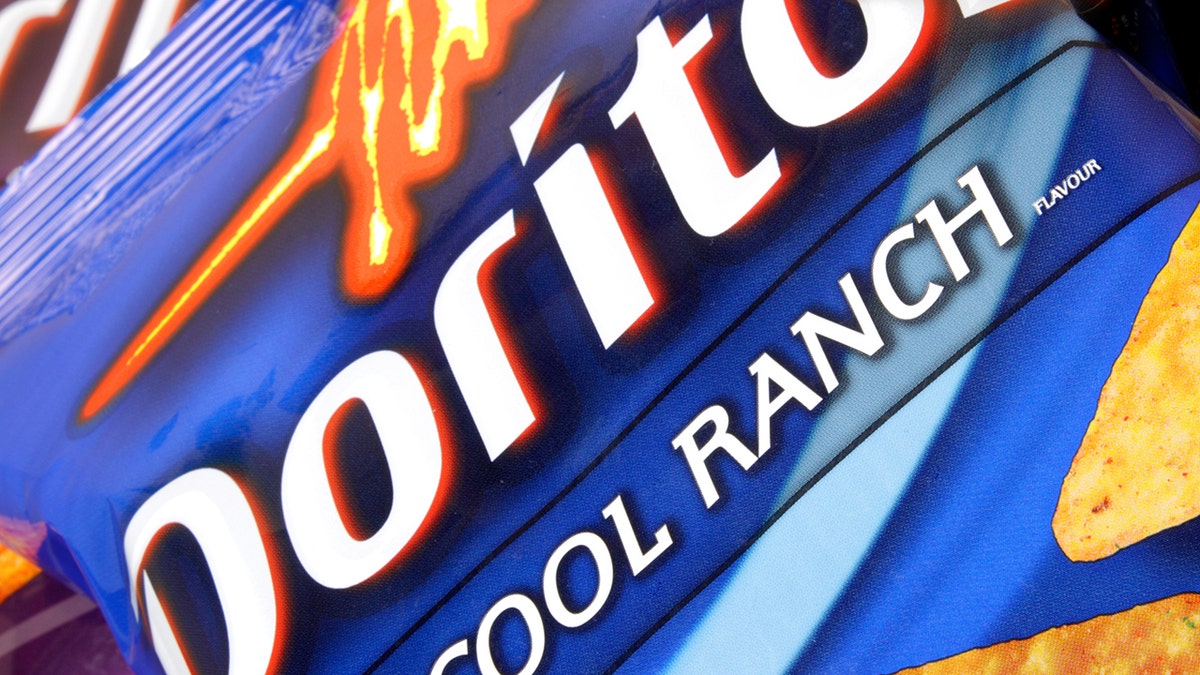Fox News Flash top headlines for September 7
Fox News Flash top headlines are here. Check out what's clicking on Foxnews.com.
Scientists at Stanford University were recently able to make a mouse's skin transparent using a common food dye, something the study's author told Fox News Digital could have exciting benefits for humans once additional research is conducted.
The paper, titled "Achieving optical transparency in live animals with absorbing molecules," was published in the journal "Science" on Sept. 5.
In it, the researchers used a solution of red tartrazine, a food dye known as FD&C Yellow 5, on the abdomen, scalp and hindlimb of a sedated mouse, said a release from Stanford University.
The dye turned the mouse's skin red, which then made the skin appear transparent – and the mouse's organs were visible to the naked eye, said the release.
"The researchers believe this is the first non-invasive approach to achieving visibility of a mouse’s living internal organs," the release noted.

A solution containing tartrazine – also known as Yellow 5 – rendered the mice's skin transparent. (iStock)
The effects were not permanent, said Stanford. The mouse's skin returned to normal once the dye was washed off.
The results of the study surprised even the researchers.
"The most surprising part of this study is that we usually expect dye molecules to make things less transparent," said Dr. Guosong Hong, assistant professor of materials science and engineering at Stanford and senior author on the paper, in an email to Fox News Digital. "For example, if you mix blue pen ink in water, the more ink you add, the less light can pass through the water."
Yet when tartrazine was dissolved in skin or muscle – normally opaque materials – "the clearer the material becomes – but only in the red part of the light spectrum," he said.
"This goes against what we typically expect with dyes," Hong added.

This image, provided by Stanford University, shows how the mouse was rendered transparent after a noninvasive solution consisting of a common food dye was applied to the mouse's abdomen. (Stanford University)
While this study has only been done on animals, the ability to make skin temporarily transparent "could offer a variety of benefits in biology, diagnostics and even cosmetics," Hong told Fox News Digital.
"For example," he said, "instead of relying on invasive biopsies, doctors might be able to diagnose deep-seated tumors by simply examining a person’s tissue without the need for invasive surgical removal."
CLICK HERE TO SIGN UP FOR OUR LIFESTYLE NEWSLETTER
"This technique could potentially make blood draws less painful by helping phlebotomists easily locate veins under the skin," he said. "It could also enhance procedures like laser tattoo removal by allowing more precise targeting of the pigment beneath the skin."
FD&C Yellow 5 is found in many foods, including soda, candy, chips, and pastries – including Doritos, says the product's website.

Although Doritos – and many other foods – contain Yellow 5, it will not make a person's skin transparent, Hong told Fox News Digital. (iStock)
Yet people should not go rubbing dyes on themselves just yet, said Hong.
"We strongly discourage attempting this on the human skin, as the toxicology of dye molecules in humans, particularly when applied topically, has not been fully evaluated," he said.
CLICK HERE TO GET THE FOX NEWS APP
Human skin, said Hong, is "significantly thicker than mouse skin," and the outer layer of the epidermis is a "substantial barrier that prevents effective delivery of molecules into the dermis."
But this could still be a reality before too long.
For more Lifestyle articles, visit www.foxnews.com/lifestyle
"A safe method for percutaneous delivery of light-absorbing molecules, following comprehensive evaluation of its potential effects on human skin, may lead to its clinical application in the future," he said.

